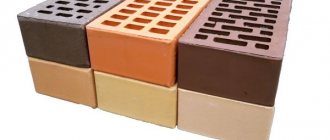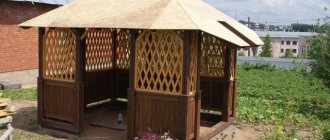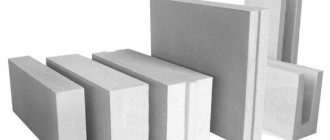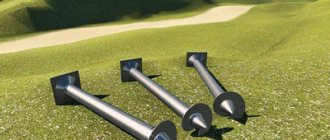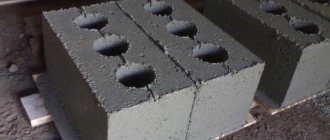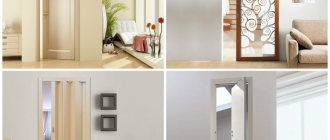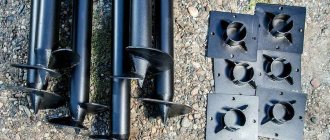Among other types of building materials used in the construction of the frame of a private house, foam concrete blocks are distinguished by their low cost, low thermal conductivity and low weight. Due to the extreme simplicity of the manufacturing technology, they can be made directly on the site in the utility room.
However, to build your own personal cottage, it is better to purchase foam blocks in a factory-made version with standard sizes and the brand required for a particular case. It is recommended to take some foam concrete products for external walls, and others for internal partitions.
What is a foam concrete block?
Foam block is a porous building material made from a mixture of cement, water with sand and a foaming agent. This is one of the varieties of cellular concrete (foam concrete). But unlike aerated concrete, which is similar in structure, voids in it are formed not due to chemical reactions inside the block during the hardening process, but due to the mixing of the concrete mixture with pre-prepared foam.
The foaming agent used is organic or synthetic. The first protein-based option is more expensive, but the block with it is more durable and environmentally friendly. Synthetics are cheap, but have a 4th hazard class. The foam blocks themselves are safe, but you have to be more careful when mixing the solution when working with the original mixture.
Forms for pouring foam concrete mixture
This material for building houses is produced in two ways:
- By cutting a monolith of hardened foam concrete into “bricks” of the required size;
- Filling forms with the required dimensions in width, height and length.
The process of sawing an array of hardened foam concrete into blocks
To save on raw materials and increase the density of the blocks, ash, clay and other bulk fine-grained materials are often added to the mixture when mixing. On the one hand, this allows a significant reduction in cement consumption, and on the other hand, it leads to thickening of the interpore walls inside the foam block, making the product more durable. Moreover, the size of internal voids in this case decreases, increasing the thermal conductivity of the material.
Appearance
Types and sizes of foam blocks
One of the main characteristics of a foam concrete block in its marking is indicated by the letter “B” and a number from 0.5 to 60. This is an indicator of strength, i.e. load in kg/cm2 that a given foam block is able to withstand during compression. The higher this index, the more weight the building material in question can support without destroying its integrity. If a two-story house is being built, then it is best to take blocks with the highest possible strength for the first floor, and lower ones for the second.
The first parameter is directly related to the brand of foam concrete “M” in the same marking. The figure in its designation is calculated using the formula “strength value B” * 10/0.7, rounded to the nearest whole number. The second criterion in the classification is their average density (MPa), which is expressed in the product name by the letter “D” and a value from 300 to 1200.
Based on density and purpose, they are divided into three groups:
- Thermal insulation - D300 (B0.35 or B0.75), D400 (B0.75; B1 or B2) and D500 (B1.5; B2; B2.5 or B3.5).
- Structural and thermal insulation – D600 (B2; B2.5; B3.5 or B5), D700 (B2; B2.5; B3.5 or B5), D800 (B2.5, B3.5, B5 or B7.5) and D900 (B2.5; B3.5; B5 or B7.5).
- Structural – D1000 (B5 or B7.5), D1100 (B7.5 or B10) and D1200 (B10 or B12.5).
The frost resistance of foam blocks is designated from F15 to F75. Products marked F15–F25 are intended for the construction of internal partitions of a house, and from F25 and above are already recommended for the construction of external walls.
Depending on the average density and size, foam concrete blocks are divided into 10 types with markings from I to X. For example, a type “I” foam block has the following dimensions: height 188 mm, width 300 mm and length 588 mm. In terms of density, it can be made with the grade D500, D600 or D700. For a block of type “V”, GOST establishes dimensions of 288x250x288 mm and any class D from 300 to 1200. And the foam concrete product “X” has overall dimensions of 88x200x398 mm and a density of only D1200.
Foam block sizes
Foam block size table
| Dimensions, mm | Pieces per 1 cubic meter | Quantity on pallet | Quantity in masonry per 1 sq. m |
| 600x300x100 | 55 | 80 | 16,7 |
| 600x300x120 | 46 | 64 | 13,8 |
| 600x300x150 | 37 | 48 | 11,2 |
| 600x300x200 | 27 | 40 | 8,4 |
| 600x300x250 | 22 | 32 | 6,7 |
Types of material
Let's figure out what types of foam blocks there are:
- The types of lightweight foam blocks are determined by their density. The material is divided into three groups - thermal insulation, structural and thermal insulation, structural;
- according to the technological features of production - building foam blocks are cut, molded and reinforced;
- According to its intended purpose, the material can be wall, partition and non-standard, made to order. In addition, a foam block with foam chips inside is produced, which retains heat well inside the structure. An example of application is a basement made of such foam blocks.
Pros and cons of houses made of foam concrete blocks
The advantages are as follows:
- The sizes of foam blocks standardized by GOST - simplifies the calculations of estimates and the work of masons;
- Cheap - foam concrete is one of the most cost-effective materials for building a house outside the city;
- Ease of processing - an ordinary hacksaw is enough to cut to the desired size;
- Durability - from them you can build a reliable and durable cottage three floors high, without using a reinforced concrete reinforcing frame;
- Light in weight – even the largest blocks can be worked alone without the use of special equipment;
- Excellent thermal insulation performance - houses made of foam blocks are considered one of the warmest; they outright outperform solid ceramic bricks in terms of heat transfer.
Foam concrete blocks are environmentally friendly and fire-resistant materials. The walls of houses made from them naturally “breathe,” which greatly simplifies maintaining a comfortable microclimate in the home. Here only log houses can compete with such cottages. However, in terms of fire resistance, wood is definitely not a competitor to foamed concrete.
Foam blocks also have disadvantages, but there are only two of them:
- High level of moisture absorption;
- Limited choice of type of foundation for the house (it must be strip or with a reliable grillage).
The main disadvantage of foam concrete is its predisposition to absorb moisture. There is no way to leave masonry without a protective finish. This applies to both interior decor and exterior façade.
Carefully check the quality of foam blocks: low-quality material may crack
When comparing the pros and cons of this building material, do not forget about the foundation underneath it. For houses made of foam blocks, the foundation will have to be made reliable and expensive. These concrete “bricks” themselves are quite light. However, the masonry of them must lie on a flat monolithic support so that, due to the movement of the soil at one of the corners of the structure, it does not crack from below to the roof.
The advantage of foam block
Foam blocks
are a modern building material that is highly environmentally friendly. When building a house from foam blocks, you can solve the issue of thermal insulation in the interior at the construction stage. Thanks to foam blocks, you can significantly reduce construction time and avoid unnecessary costs for building materials.
Foam blocks are in demand in the Russian construction market due to their environmental friendliness, availability and efficiency.
An important characteristic of foam concrete is that it gradually becomes stronger. If we determine the strength of foam blocks in buildings built 10 years ago, this figure will be 2 times higher than the initially declared strength.
When building a small house , for example, it is possible and even preferable to use foam blocks of the D600 brand rather than the D700 brand.
Foam block is the best building material for building a small house, bathhouse, garage. Foam concrete is constantly gaining strength, as it consists of 90% cement. The strength of the building increases by 1.5-2 times after a year.
Because the higher the density of the foam block, the worse its thermal insulation properties, which means a house made of such foam blocks will store heat worse and you will have to spend a lot on its insulation and heating during operation in the future.
The production of foam blocks is quite popular today. This is explained by the significant superiority of this building material in comparison with others (brick, concrete, stone, wood).
The advantage of foam blocks
Foam blocks, like any other material, have their advantages. So why should you choose them?
Time-tested technologies
Firstly, foam concrete blocks have been used in construction for a very long time. The methods used to make them were previously kept secret. The only thing that is known for sure is that the masonry mortar contained eggs, which made it possible to make the buildings being erected strong. Direct proof of this is the buildings that were erected in the Middle Ages and they still stand to this day, and it is worth comparing them with many modern buildings that can withstand at most 20 years. As the builders say, if you mix egg whites with lime, active foaming will begin, and it is this foam, consisting of many air bubbles, that increases the strength of the masonry. Also, foam blocks consist of foam with bubbles, which makes them very durable.
Heat and sound insulation
Secondly, when laying wall structures from foam blocks, you get excellent heat and sound insulation. Good noise insulation of this building material is obtained due to the air that is in the pores of the foam block. Throughout their entire thickness, foam concrete blocks contain closed cavities - pores, and they are all separated from each other. Thanks to these closed pores, there is no air transfer in the foam block. Thus, thanks to its unique porous-closed structure, this building material has the ability to absorb external noise and retain heat. Also, to build a house, you need much less foam blocks than, for example, the same bricks.
Humidity control or foam concrete “breathes”
Thirdly, thanks to foam concrete blocks there is no need to control the humidity level in the interior. But walls made of foam blocks cannot be called “breathable”, since there is no free air exchange between the external and internal spaces. With this building material, a slightly different process occurs: the pores of foam blocks have a peculiarity - they partially adsorb excess water vapor. While the air in the interior is dry, thanks to this adsorbed moisture, the air begins to humidify to its normal state, resulting in an improvement in the microclimate. In this case, there is no accumulation of moisture in the thickness of the walls and there are no problems with fungus and mold, which is often a problem in brick houses or reinforced concrete buildings.
Foam concrete is cheaper
Fourthly, foam concrete blocks at first glance may seem more expensive than brick, but this is a mistaken opinion. When building a house, you will need much less foam blocks than bricks, since the former are larger. In addition, when laying bricks, you will have to additionally insulate the walls, which will require new financial investments. From this we can conclude that it is much more profitable for the developer to purchase foam concrete blocks than bricks; in addition, you can save significantly by purchasing foam blocks directly from manufacturers.
Technical characteristics of the foam block
Foam concrete is a type of porous concrete with a closed pore structure, which affects its buoyancy and, accordingly, lightness. Foam blocks have different densities:
- D400-D500 kg/m3 – heat-insulating, used as filling for monolithic load-bearing walls;
- D600-D900 kg/m3 – heat-insulating and structural, used in low-rise construction on load-bearing walls;
- D1000-D1200 kg/m3 – structural blocks.
We can produce foam concrete blocks of any density in the shortest possible time
In the production of foam concrete blocks, the components are screenings, foaming agent, and plasticizer. Sometimes impurities are added.
Depending on what the foam block is made of, the dimensions, price and production method will differ:
- molded - poured into sheet metal molds, resulting in wall (size 200/300/600 mm) and wall (size 100/300/600 mm) blocks;
- self-leveling (monolithic) – removable formwork is poured (from OSB, plywood) or into permanent formwork (for example, between brick layers);
- sawn - a large-sized finished massif is cut into small pieces using a saw;
- polystyrene foam - combined with polystyrene foam balls, from which foam boards are made, used for insulating facades;
- reinforced - balt, bronze, and steel fibers are added to the suspension;
- non-autoclaved aerated block - not processed at high temperatures and pressure.
Foam concrete reaches strength suitable for transportation in 3 days, full strength is acquired in a year.
Methods for producing inexpensive foam blocks
Active sales of foam blocks stimulate companies to actively develop their production technologies. There are several technologies for producing concrete. They can be combined into 2 main groups:
- Blocks are obtained by vigorously mixing all components in a mixer simultaneously with air being drawn into the finished solution. This technology has its drawback - foam is obtained only with a very liquid solution. To do this, you need to introduce a lot of water (and this reduces the strength of the finished material) or actively use plasticizers (chemical additives that “negate” the effect of using environmental protein foam converters). The foam concrete obtained in this way has a structure consisting of air bubbles 1.5-2 mm in size. The advantages of the technology are the low cost of equipment and the simplicity of the technological process.
- A concrete solution is prepared, then foam prepared in a foam generator is fed into it. When mixed, the foam is evenly saturated with concrete. The sequence of operations used in this technology makes it possible to monitor the correctness of the stages of the technological chain. Foam concrete prepared in this way has excellent quality with a minimum water content and without chemical additives. The disadvantage is the large number of operations and the high cost of equipment.
Pros of foam concrete:
- safety;
- quick installation;
- durability;
- soundproofing;
- reliability;
- fire safety;
- thermal insulation;
- ease of construction;
- weather resistance;
- environmental friendliness;
- efficiency.
Thanks to their properties, foam blocks allow:
- eliminate the use of slag and gravel filler;
- save on cement mortar consumption;
- reduce the design thickness of the walls by 2 times;
- increase by 3 times the savings in heat required to heat the building;
- reduce the cost of labor for builders and transportation of materials;
- improve the quality of construction;
- reduce the time required for thermal insulation of the room.
Aerated concrete and foam block belong to the class of composite porous concrete. Both have durability, environmental friendliness, and thermal insulation properties. Construction using them is faster when compared with traditional bricks.
Foam block is inexpensive and practical. Due to its density, it is actively used in the construction of small-sized buildings and internal partitions. Keeps its qualities unchanged. The production of foam blocks involves cement, sand, water, natural or chemical foaming agents.
Aerated concrete is a building element that contains cement, sand, lime, ash, aluminum powder, and may also include gypsum. Production is carried out using autoclaves at a certain temperature. During the mixing of the components, hydrogen gas is released.
What are the differences between aerated concrete and foam block:
- Manufacturing technology. Gas block requires production conditions and equipment.
- In terms of fire safety and sound insulation, both materials are equal.
- Foam block and gas block are used in the construction of energy-saving structures, allowing savings on heat of up to 30% in the cold season.
- Foam concrete blocks are used in the construction of structures up to 3 floors.
- The structure of the gas block is capillary, i.e. Most of the bubbles are open, the bubble structure of the foam block is closed, i.e. the bubbles are closed.
The open cellular structure of the aerated block absorbs moisture well. In winter, water expands and blocks can break, so when building with aerated concrete blocks, it is necessary to waterproof the material
Submit your application

